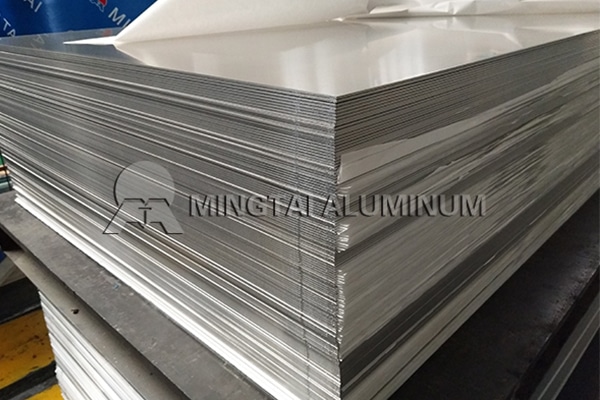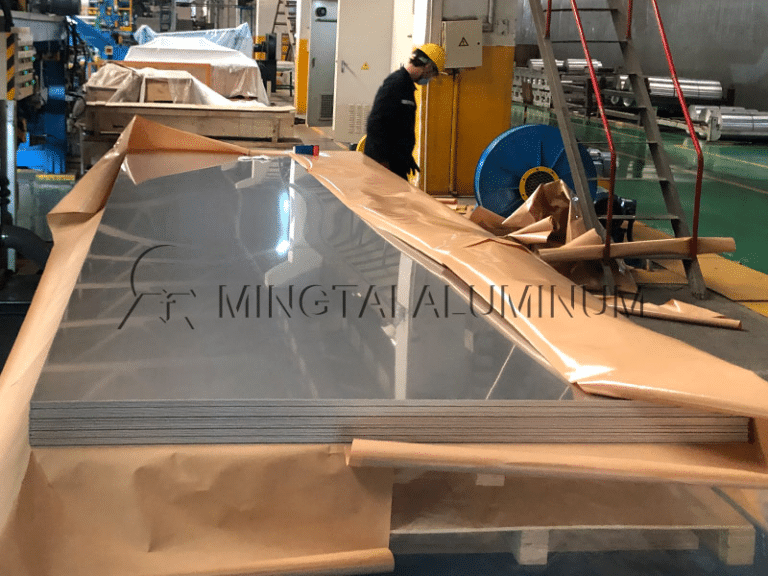As a cost-effective metal building material, 3003 aluminum sheet for roofing and cladding demonstrate outstanding rust-resistant performance. Particularly in corrosive environments such as humid, rainy, or coastal areas, their material properties directly impact a structure's service life and maintenance costs.
This article provides an in-depth analysis of the anti-corrosion performance of 3003 aluminum sheets in roofing and cladding applications, covering material composition, environmental adaptability, and industry case studies. Additionally, it offers purchasing recommendations for international buyers.
Core Advantages of 3003 Aluminum Sheet in Rust Resistance
3003 aluminum sheet belongs to the Al-Mn alloy series, where the addition of manganese (approximately 1.0-1.5%) significantly enhances its corrosion resistance. The naturally formed aluminum oxide (Al₂O₃) layer on its surface acts as a protective barrier, preventing direct contact between air, moisture, and the base material, thus offering inherent rust resistance. Compared to ordinary carbon steel, 3003 aluminum sheet demonstrates superior weather resistance in salt spray tests (ASTM B117 standard), making it suitable for coastal buildings or industrial pollution-prone areas.

Environmental Adaptability: Rust Resistance in Different Climates
Temperate Oceanic Climate:
In regions like Western Europe with annual rainfall exceeding 800mm, 3003 aluminum roofing can maintain an anti-corrosion lifespan of over 20 years, requiring only regular water rinsing to preserve surface cleanliness.
Tropical Rainy Environments:
In high-temperature, high-humidity areas like Southeast Asia, the self-healing oxide film of aluminum sheets resists fungal growth and acid rain erosion, preventing the rust-spotting issues common in traditional metal sheets.
Extreme Temperature Variation Zones:
In parts of North America where daily temperature fluctuations exceed 30°C, aluminum's low thermal expansion coefficient minimizes coating cracking risks, indirectly enhancing rust-proof durability.
Key Maintenance Measures to Extend Rust Resistance
Regular Cleaning: Use a neutral detergent for quarterly rinsing to prevent dust and acidic substance buildup.
Protective Coatings: In highly corrosive areas (e.g., near chemical plants), an additional fluorocarbon coating can extend rust resistance by 2-3 times.
Edge Sealing: Ensure waterproof treatment for cut edges during installation to prevent capillary-induced internal corrosion.
Mingtai Aluminum’s 3003 Aluminum Sheet: Dual Assurance of Quality & Service
As a leading enterprise in China's aluminum processing industry, Mingtai Aluminum’s 3003 sheets are ISO 9001 and SGS certified, offering the following advantages:
Precise Alloy Ratio: German spectrometer-tested composition ensures uniform manganese distribution and stable rust resistance.
Customized Production: Available in thicknesses of 0.3-6mm and widths up to 2500mm, catering to diverse roofing design needs.
Global Supply Chain: Supports LCL shipping and provides multilingual technical teams for overseas installation guidance and after-sales support.
Call to Action:
If you are seeking cost-effective and corrosion-resistant roofing materials, contact Mingtai Aluminum for free samples and technical solutions. Through optimized alloy formulations and surface treatment technologies, we have delivered reliable solutions for construction projects in over 30 countries worldwide.




